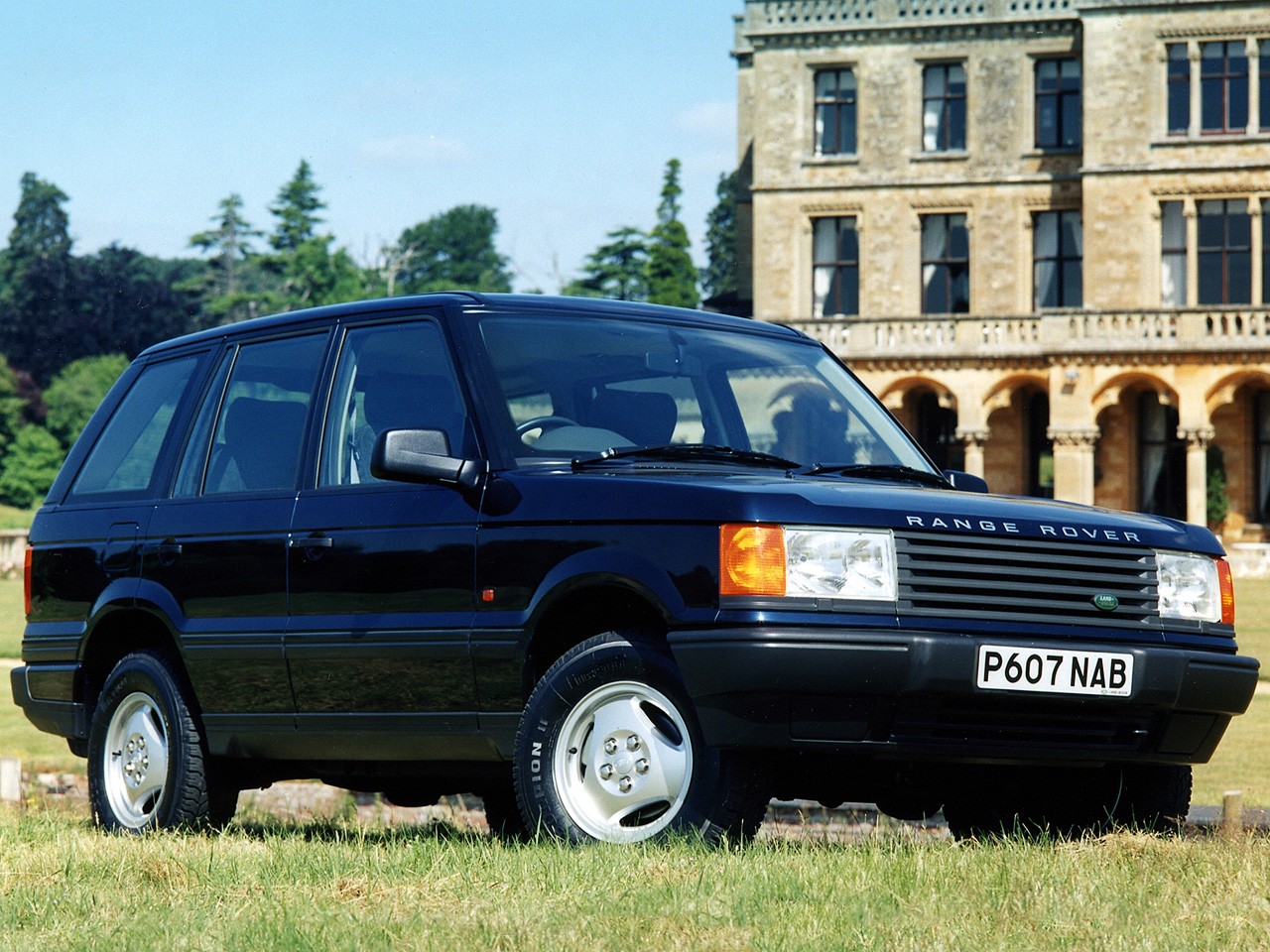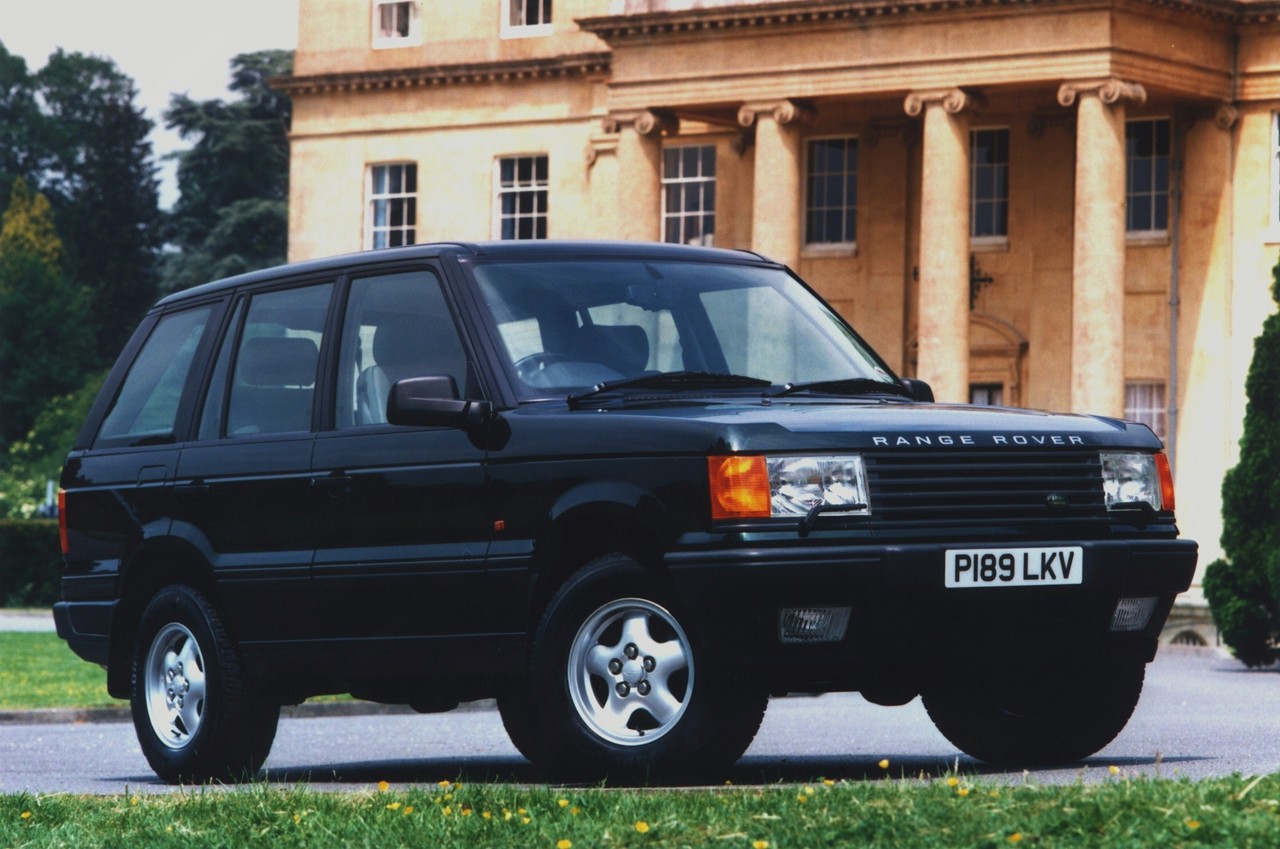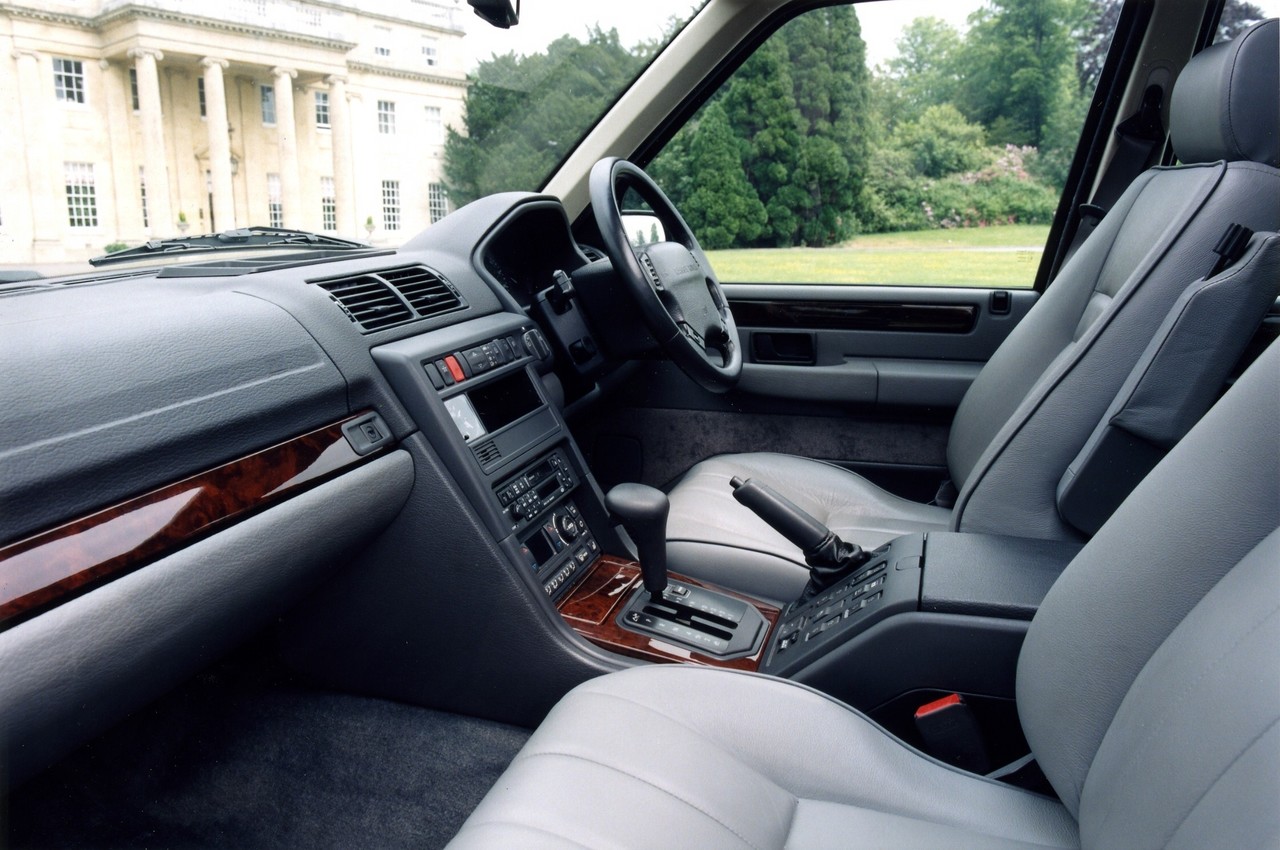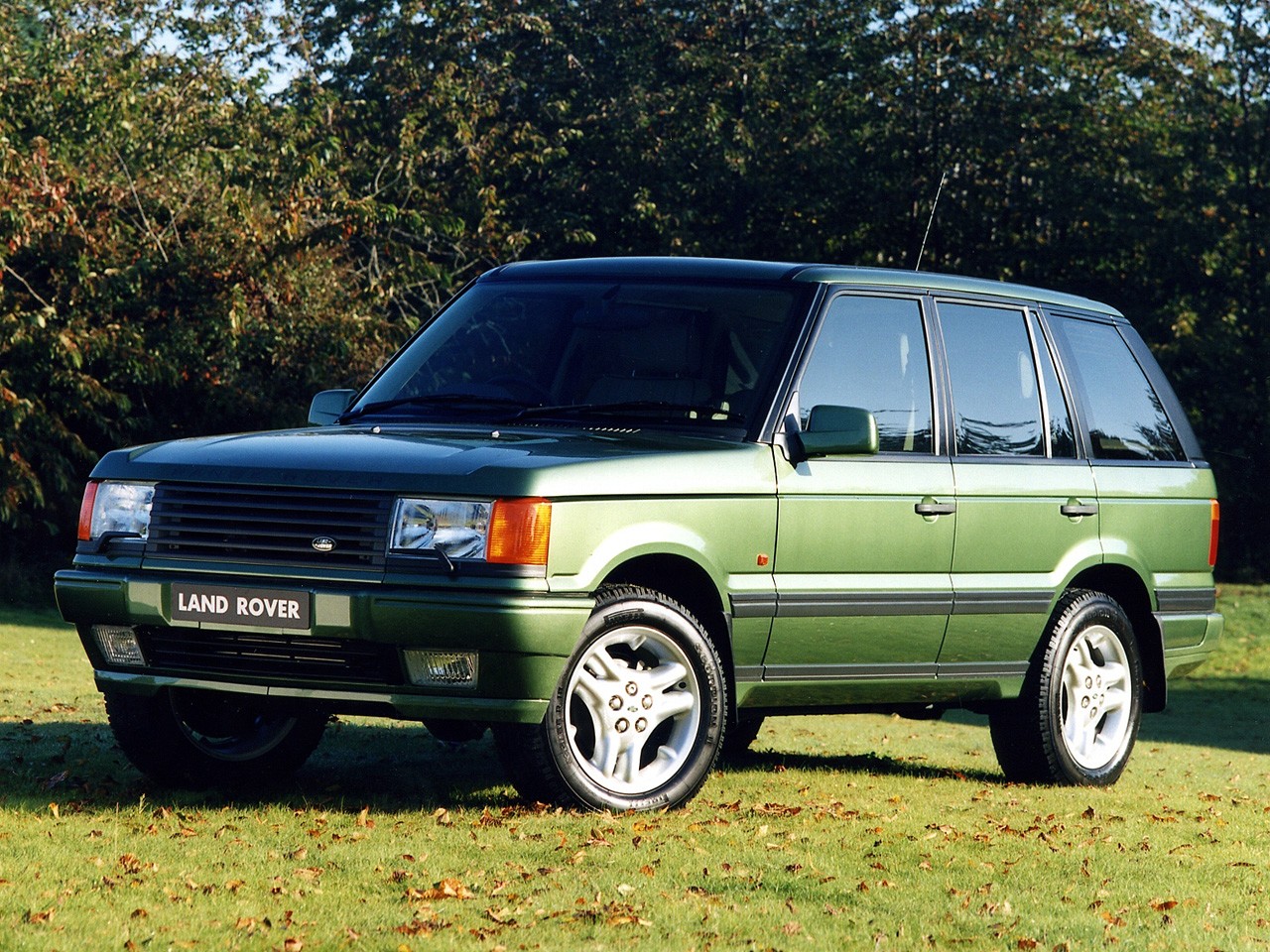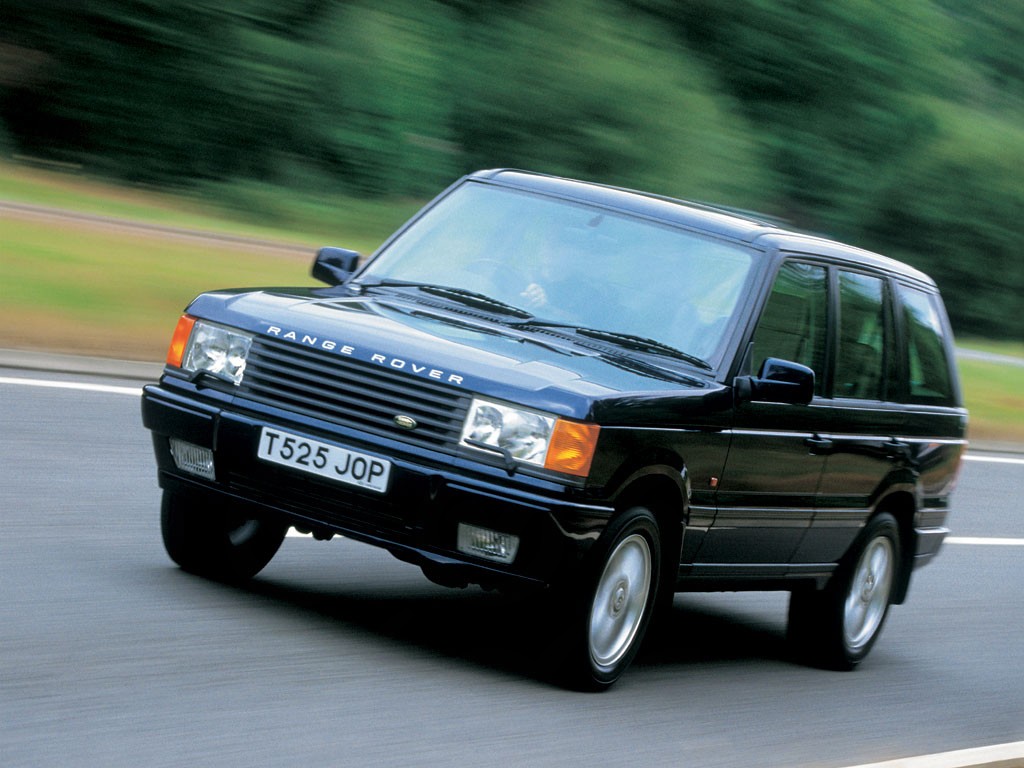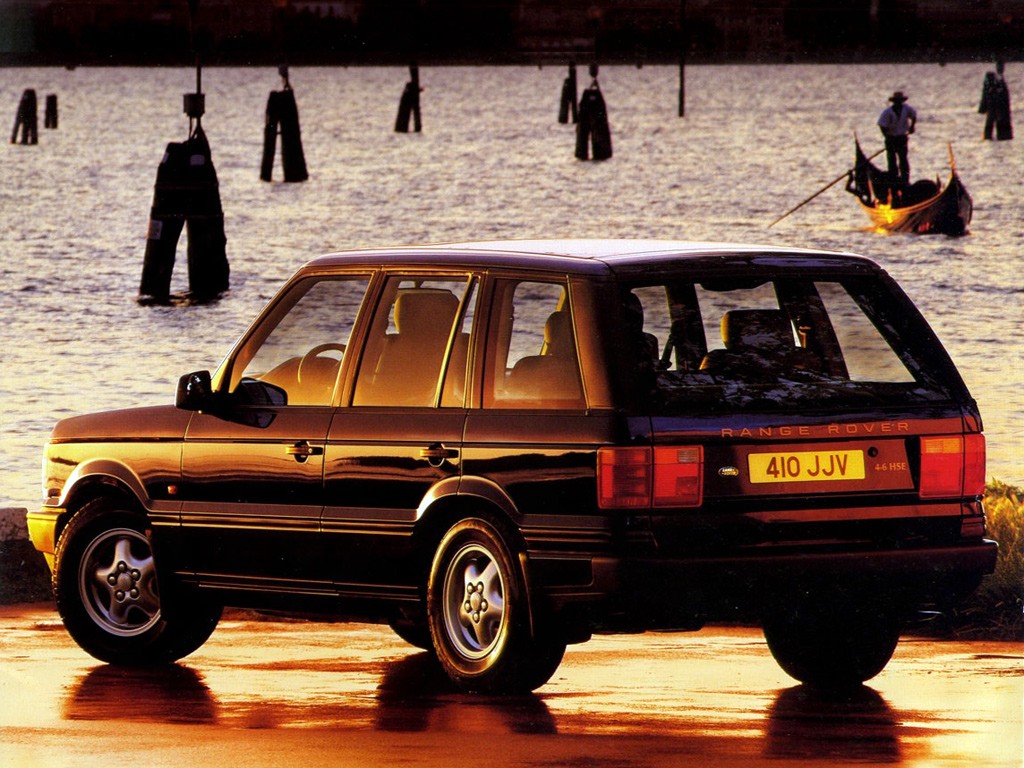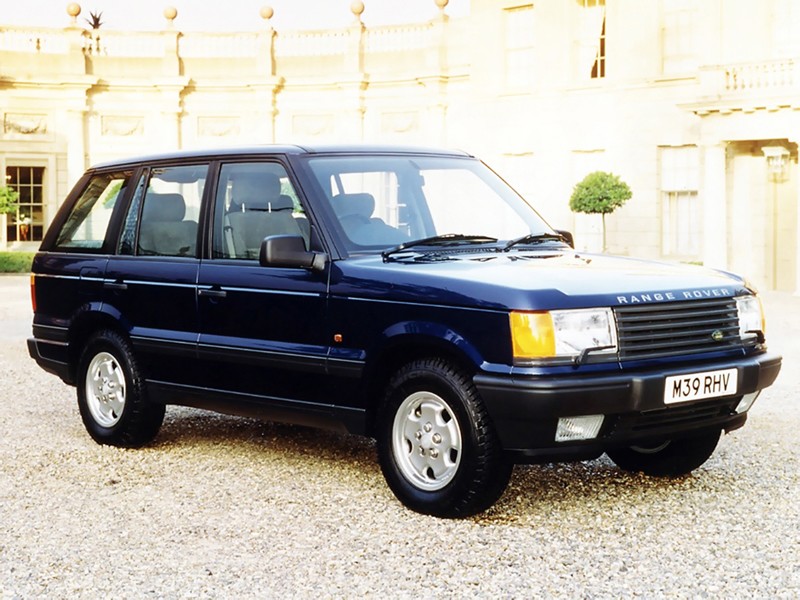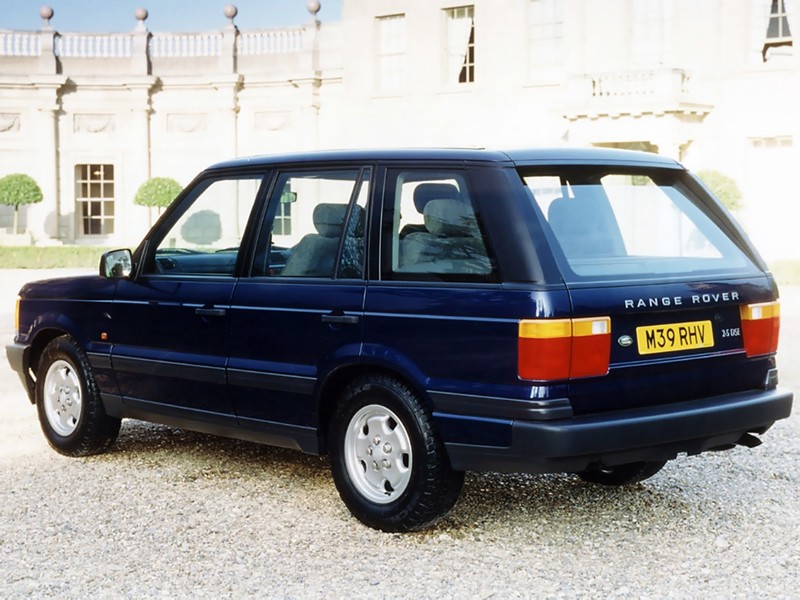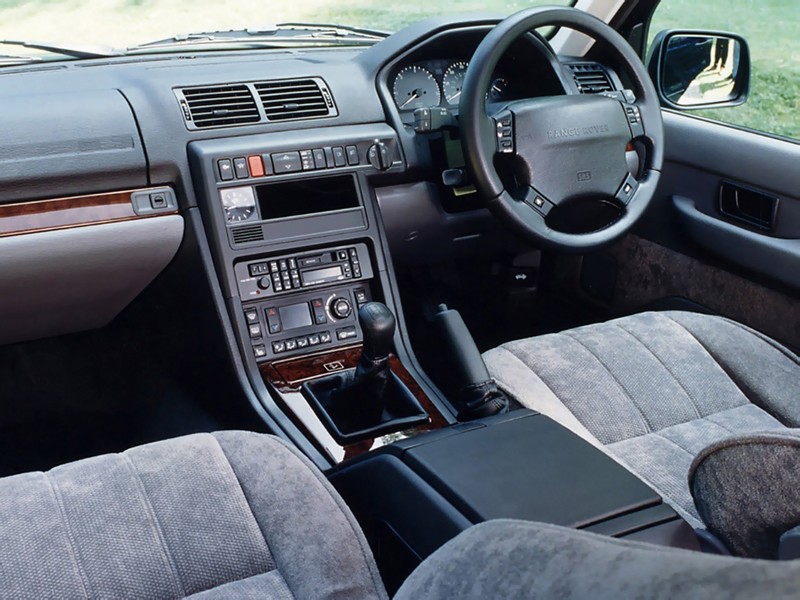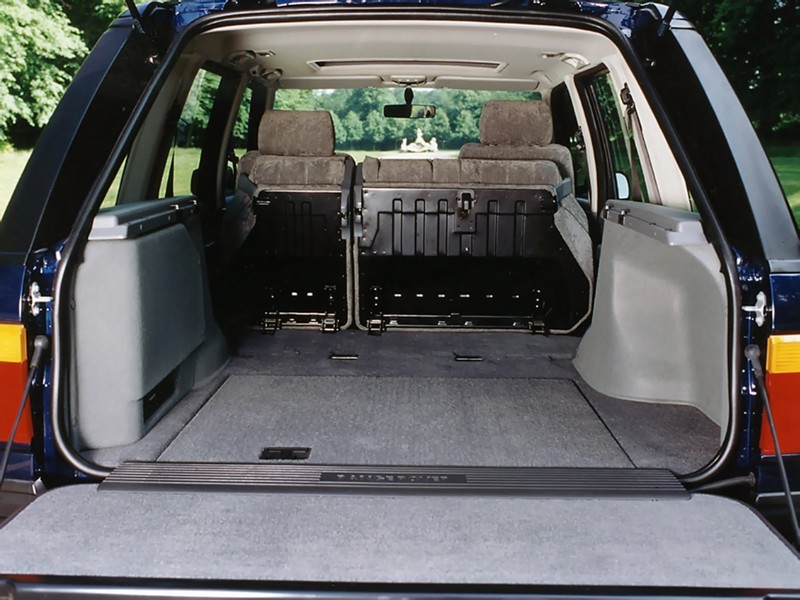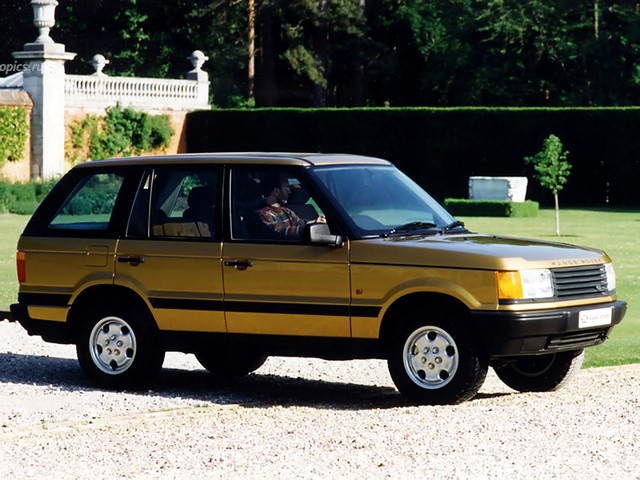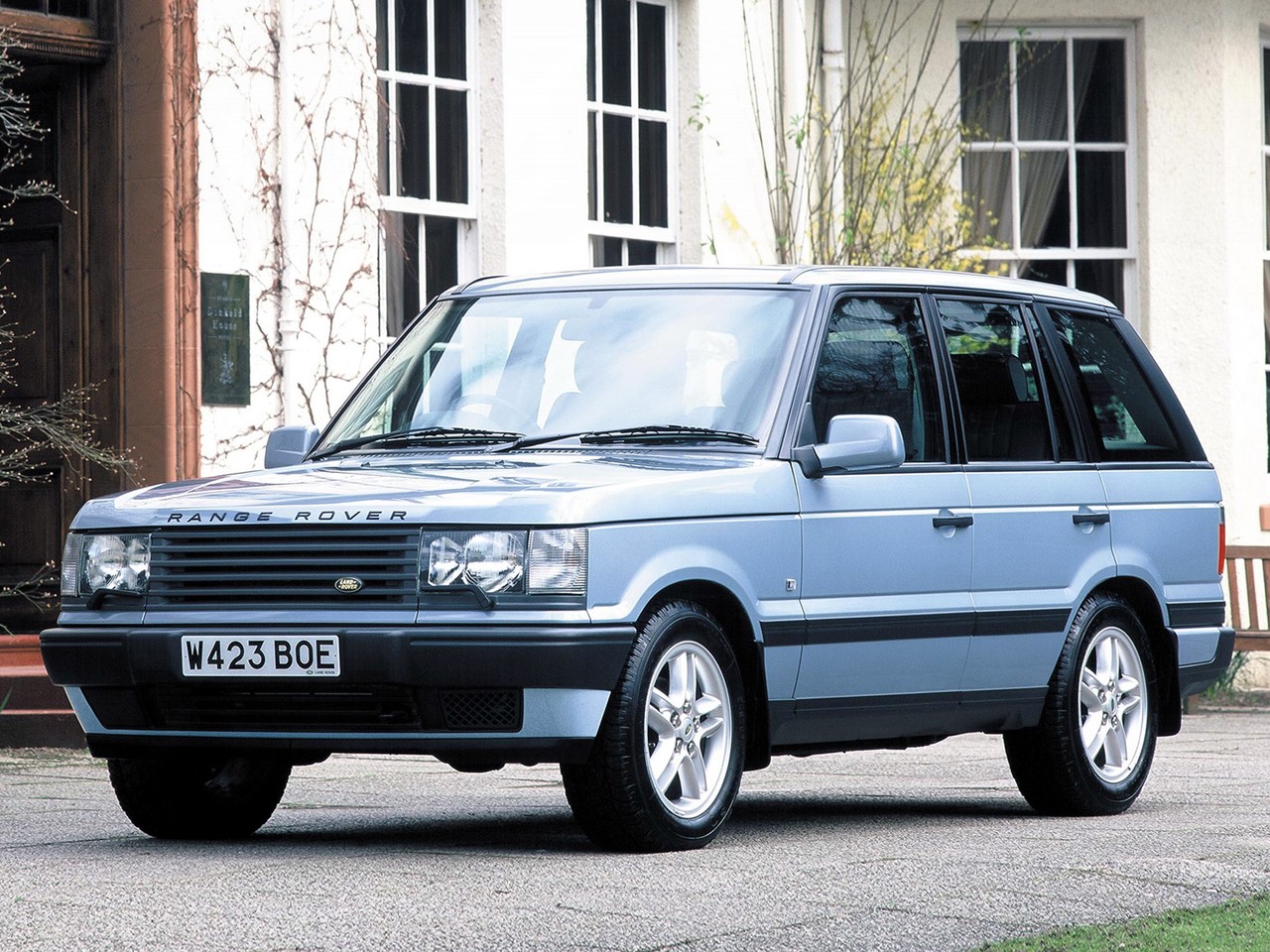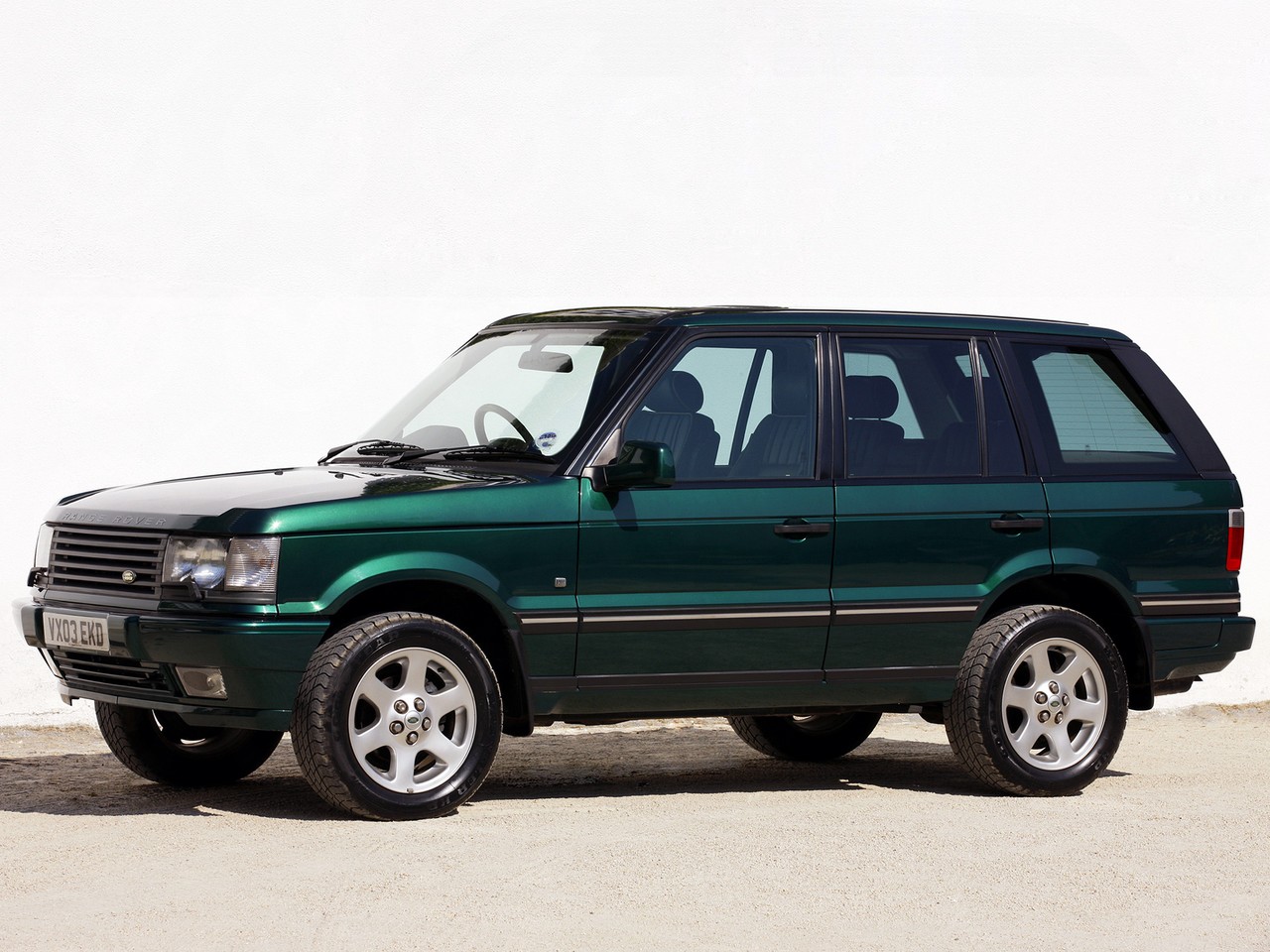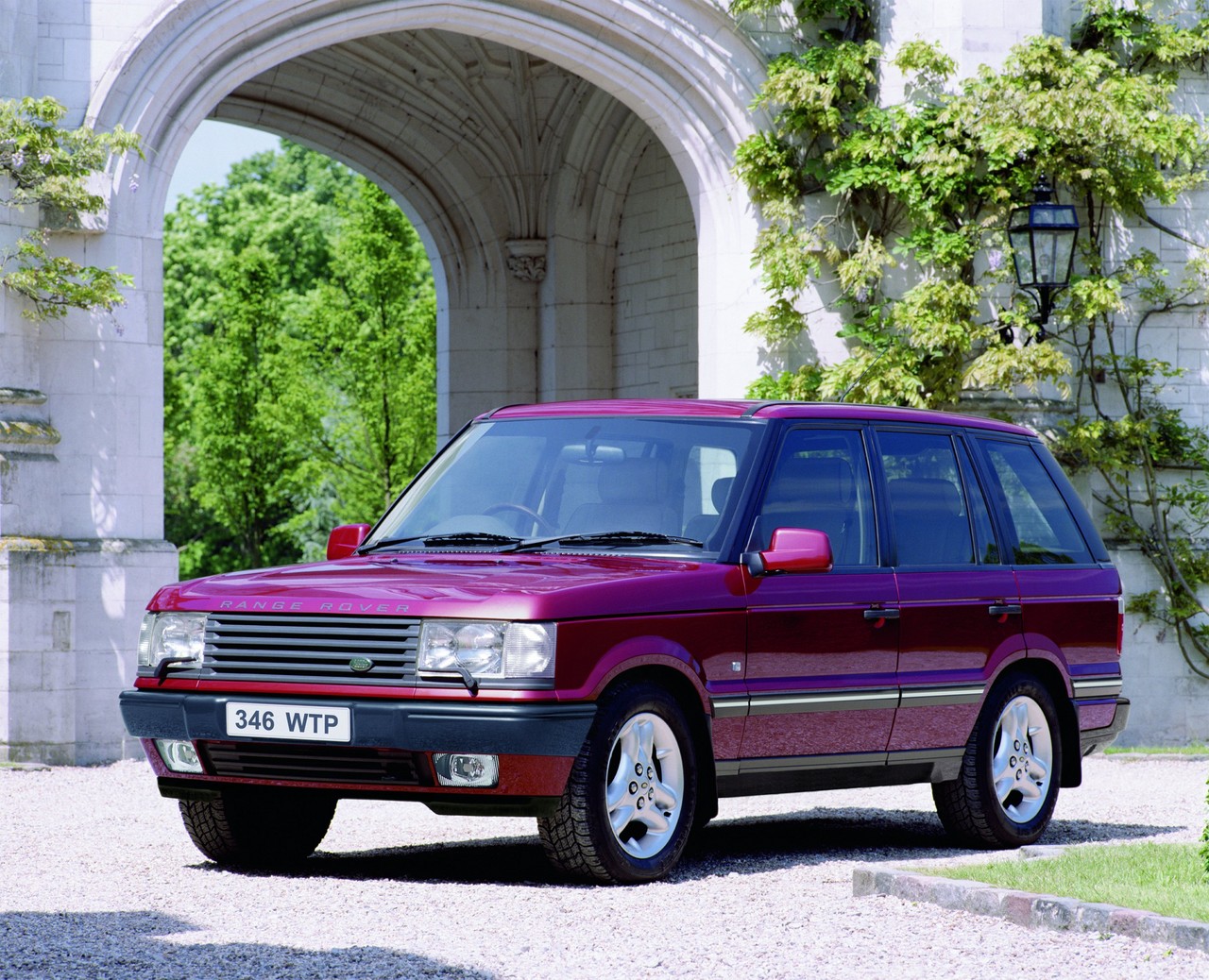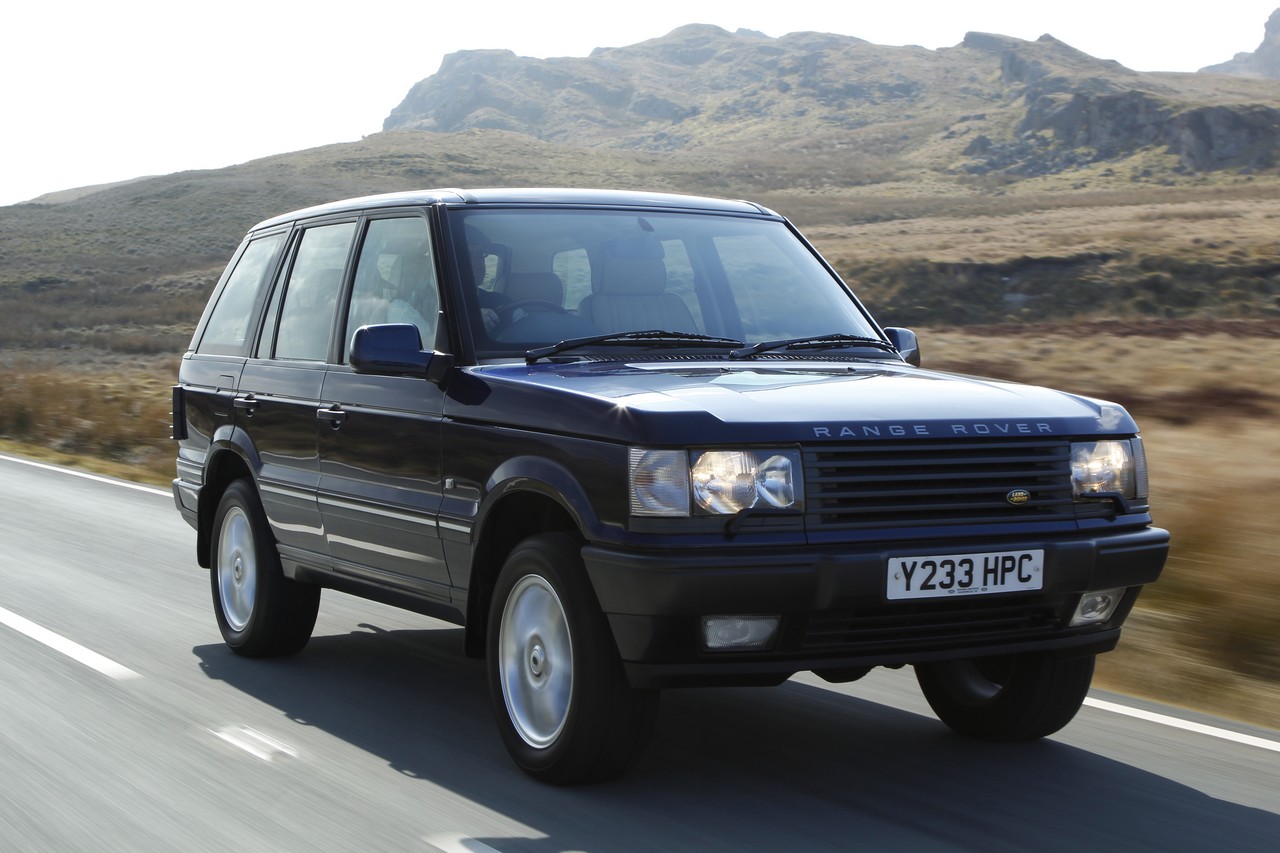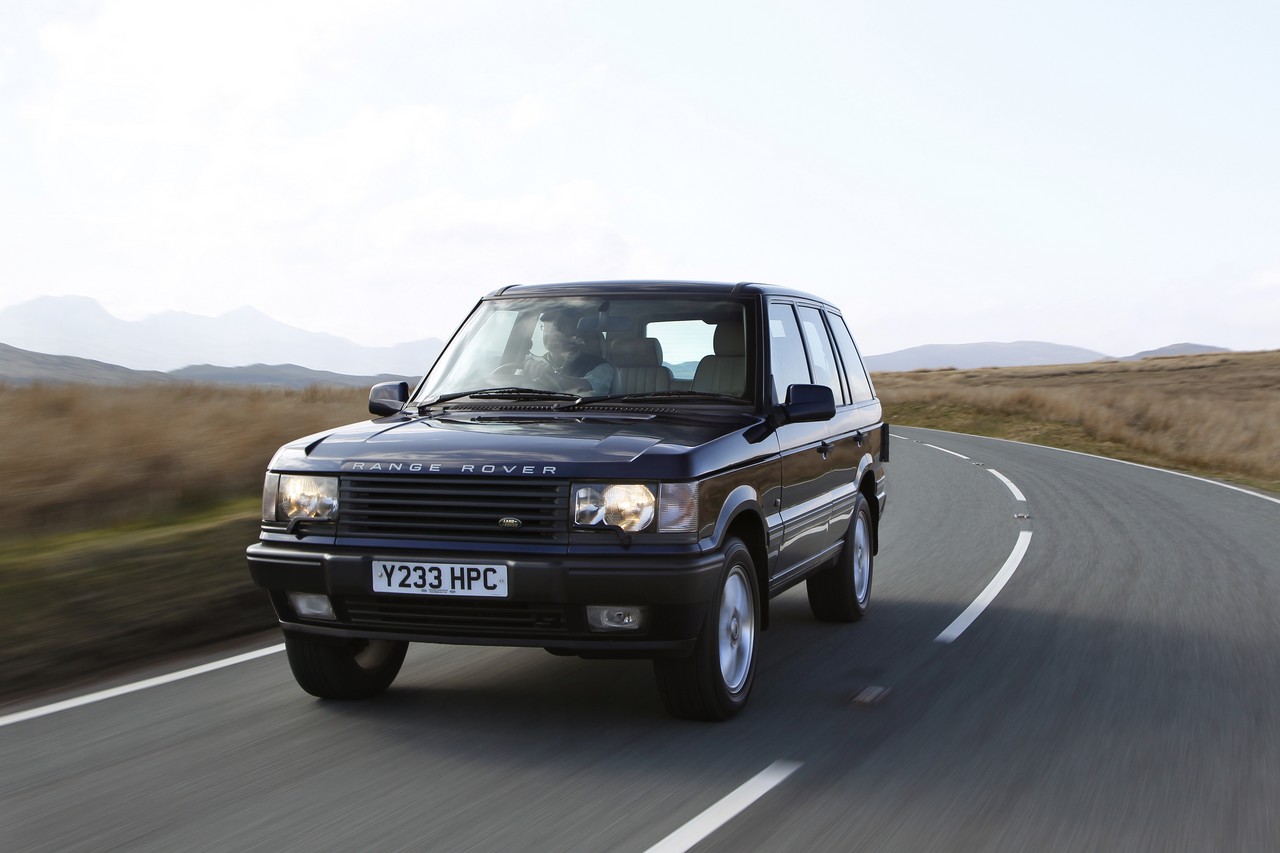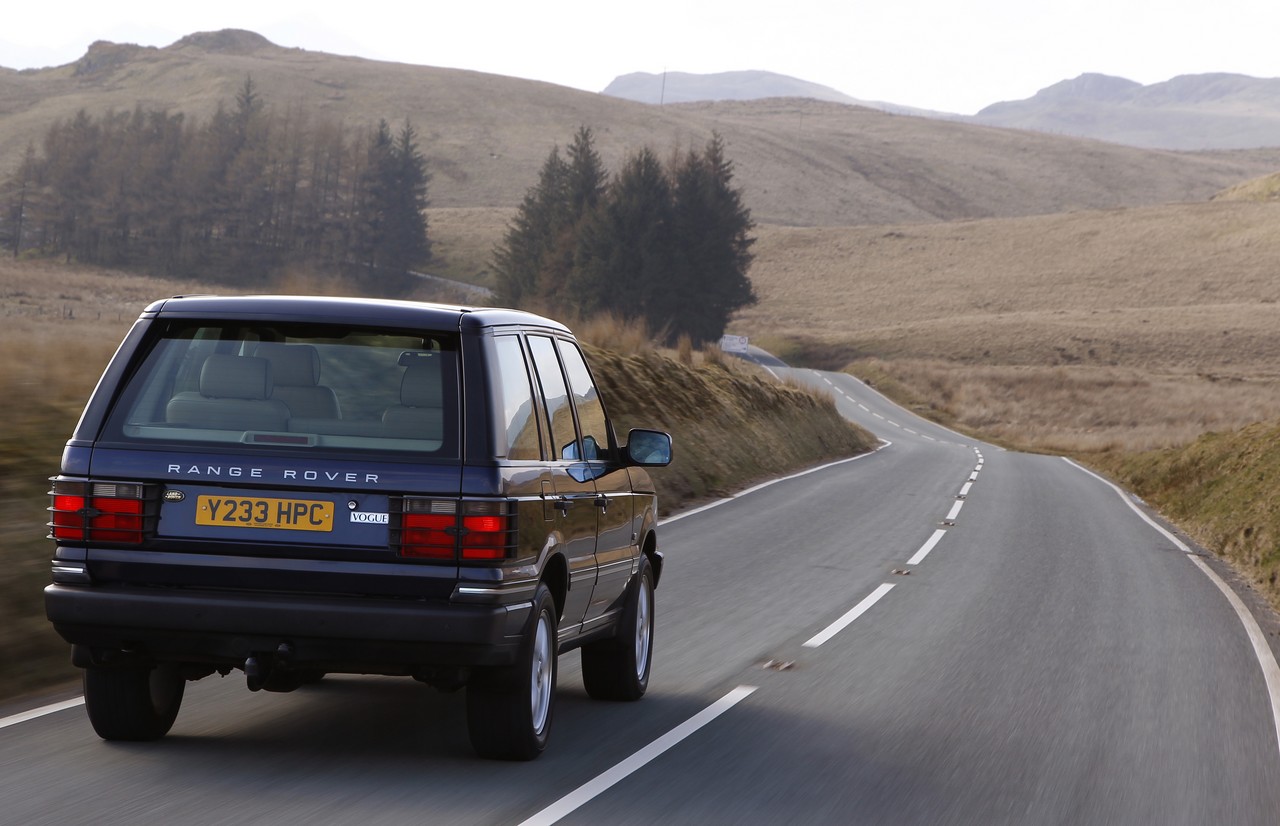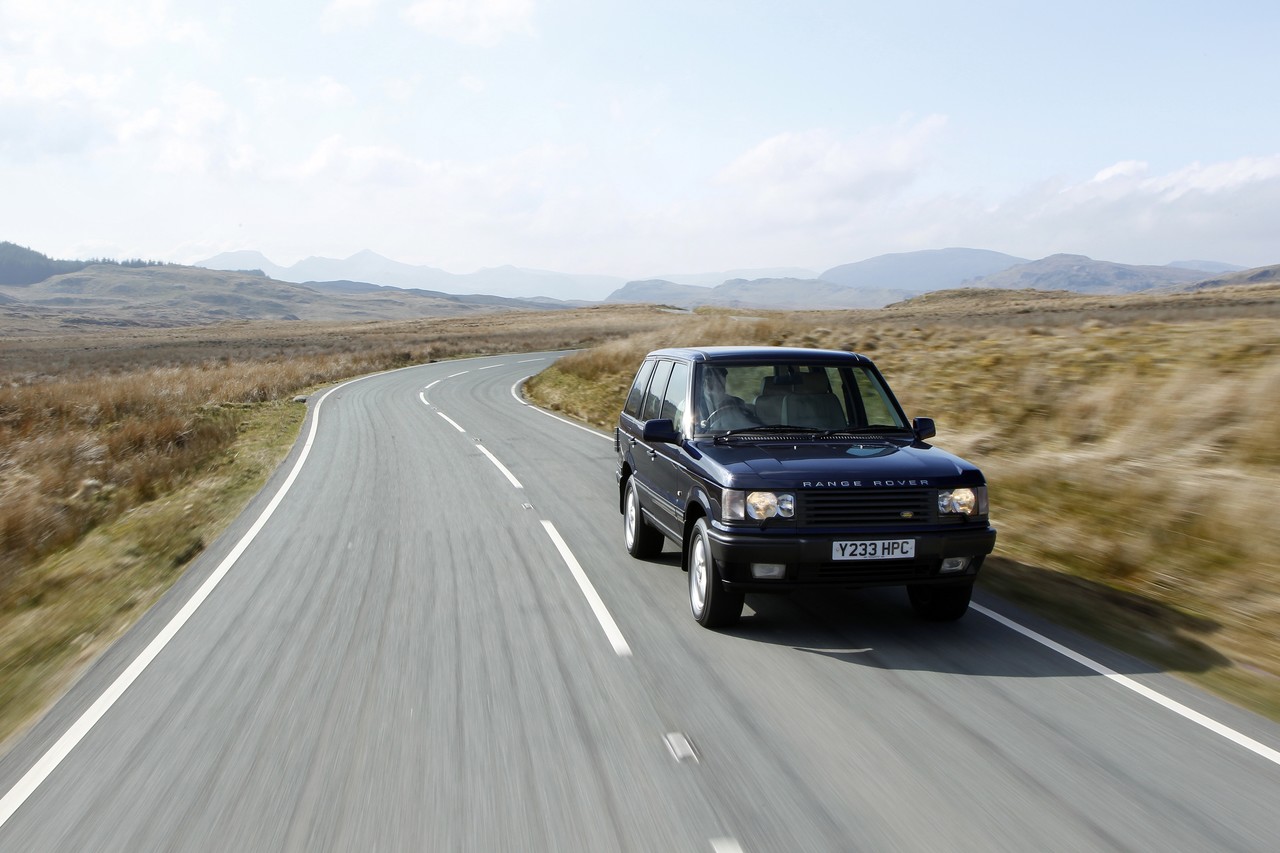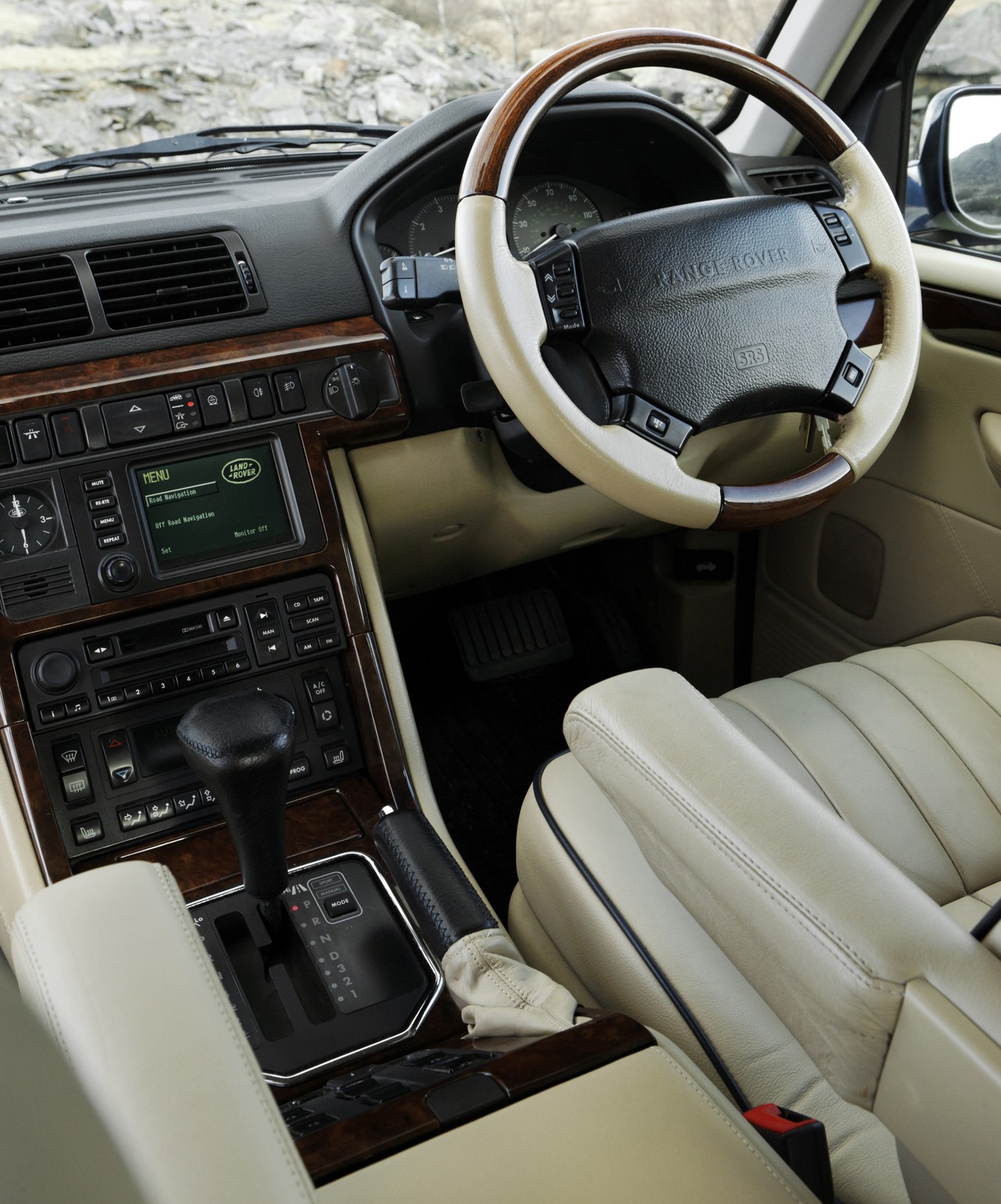
- Comfortable ride
- Spacious interior
- Off-road capability
- Low-tech, low-compression pushrod engines
- Weight blunts agility and fuel economy
- Large turning circle
- Electronic air suspension costly to replace
Review: Land Rover P38A.I Range Rover (1995-98)
Overview
Released in May 1995, the Land Rover P38A Series I (P38A.I) Range Rover was a four-wheel drive wagon. Manufactured in Solihull, England, the P38A Range Rover was initially powered by 4.0- and 4.6-litre V8 petrol engines that were mated to four-speed automatic transmissions.
Engines and transmissions
Both the 4.0- and 4.6-litre Rover pushrod V8 engines had aluminium blocks and cylinder heads, Lucas electronic fuel injection with GEMS ECU and two valves per cylinder. Generally, Australia received low compression engines such that the 4.0-litre V8s had a compression ratio of 8.13 and the 4.6-litre V8 engines were 8.35:1.
The 4.0-litre V8 engines were mated to ZF HP22 automatic transmissions, while the 4.6-litre V8 engines used ZF’s HP24 transmission. The transmissions were operated by an ‘H’ gate gear selector which provided control over both the transmission and transfer with a single lever.
Chassis and dimensions
The P38A Range Rover had a fully boxed and seam-welded perimeter frame with boxed or tubular cross members. In addition, the Range Rover had an inner body-cage that was constructed in a similar method to typical unitized bodies.
The P38A Range Rover was 4713 mm long, 1889 mm wide, 1817 mm tall (standard ride height) and had a 2745 mm long wheelbase, while the drag coefficient was 0.38 Cd. The P38A Range Rover also made use of aluminium panels for the front wing outer panels, door skins and lower tailgate skin such that 4.0-litre V8 models had a kerb weight of 2100 kg and 4.6-litre V8 models were 2220 kg.
Suspension
The front suspension for the Range Rover consisted of a beam axle located by cranked radius arms and Panhard rod. At the rear, the beam axle was located by composite trailing link and Panhard rod. Both the front and rear suspensions included air springs as part of Range Rover’s Electronic Air Suspension (EAS).
The EAS system consisted of air springs at each wheel which were adjusted automatically via an on-board compressor. At highway speeds, EAS would automatically lower the vehicle for greater stability and improved aerodynamics. When traversing difficult terrain, however, EAS could raise the ride height and assist a tyre to find additional grip in severe conditions. The EAS system also had five modes which the driver could select via a rocker switch:
- Standard;
- Access: 65 mm lower than Standard and could be selected by the driver at speeds below 30 km/h. Access mode could also be selected up to 40 seconds after engine switch-off and up to 40 seconds before stopping;
- Low: 25 mm lower than Standard and automatically engaged at speeds above 80 km/h. Low mode could be selected by the driver at any speed;
- High: approximately 38 mm higher than Standard, High mode could be selected by the driver at speeds under 56 km/h; and,
- Extended: 70 mm higher than Standard and automatically engaged if the vehicle became high centred.
| Variant | Edition | Years | Engine | Trans. | Peak power | Peak torque |
|---|---|---|---|---|---|---|
| 4.0 | SE | 1995-98 | 4.0-litre petrol V8 | 4sp auto | 132 kW at 4750 rpm | 304 Nm at 2600-3000 rpm |
| S | 1998 | |||||
| 4.6 | HSE | 1995-98 | 4.6-litre petrol V8 | 4sp auto | 157 kW at 4750 rpm | 358 Nm at 3000 rpm |
| Autobiography | 1997-98 |
4WD system
The P38A Range Rover had a permanent four-wheel drive system with a two-speed Borg-Warner 44-62 transfer case that provided a 1.216:1 high range ratio and a 3.271:1 low range ratio.
The 4WD system included an automatically locking viscous coupling unit (VCU) which restricted the speed difference between the front and rear axles. As the speed difference increased, drag inside the coupling would increase, progressively transferring more drive to the front axle until the unit reaches a state of virtual lock (i.e. 50:50 front:rear).
Safety equipment
Standard safety equipment for the P38A Range Rover included dual front airbags and four-channel ABS. The 4.6 HSE variants were also fitted with rear-wheel traction control – when the ECU detected that a rear wheel was spinning faster than the other, it would apply brake pressure to the spinning wheel and transfer torque across the axle to the wheel with grip.
The P38A Range Rover had 297 mm ventilated front brake discs with four-piston calipers and 304 mm solid rear discs with two-piston calipers.
Features
Standard features for the Land Rover P38A.I Range Rover 4.0 V8 S included 7J x 16-inch alloy wheels with 235/70 R16 105H tyres, an eight speaker sound system with a radio and cassette player, climate control air conditioning, cruise control, leather-wrapped steering wheel, 60/40 split and folding rear seats, remote central locking, power windows, power mirrors with heating, a tilt and reach adjustable steering wheel, a height adjustable driver’s seat, front door puddle lights and an alarm system.
The Range Rover 4.0 V8 SE was further equipped with an eleven speaker sound system (including a subwoofer) with a six-disc CD changer and a trip computer.
Beyond this, the Range Rover 4.6 HSE added five-spoke 8J x 16-inch alloy wheels with 255/65 R16 109H tyres, leather upholstery, power adjustable and heated front seats, front fog lights, leather-wrapped steering wheel with cruise and audio switches, driver memory settings (for seat, mirrors and instrument panel dimmer settings), automatically dipping mirrors on reverse, an auto-dimming interior mirror, illuminated passenger vanity mirror, rear door puddle lamps, footwell lamps, burr walnut interior trim and a power sunroof.
Range Rover 4.6 Autobiography
Released in May 1997, the Autobiography was based on the 4.6 HSE but featured 18-inch alloy wheels, additional leather and burr walnut trim.
Review: Land Rover P38A.II Range Rover (1999-02)
Overview
Available from 1999, the P38A.II Range Rover introduced upgraded engines, revised interiors and additional safety equipment.
The 4.0- and 4.6-litre V8 engines received new Bosch 5.2.1 engine management systems (replacing the Lucas GEMS system), new air cleaners, intake manifolds, stronger cross-bolted cylinder blocks and low back-pressure exhaust systems. Other changes included a stiffened cast alloy structural sump to reduce transmission noise and increased throttle sensitivity for greater responsiveness. However, delays in producing the updated 4.0-litre V8 engines meant that early 1999 vehicles were fitted with the original P38A.I (i.e. pre-1999 design) engine.
Inside, the P38A.II received soft-feel materials, revised upholstery patterns, chrome door handles, leather-covered door arm rests and colour-keyed door handle assemblies.
February 2000: Range Rover update
In February 2000, the P38A.II Range Rover received cosmetic updates which included a new headlamp design with ’round headlamp effect’ masking, smoked indicator lenses, body-coloured bumpers and door mirrors. Inside, the cup holders were redesigned, redesigned instrument graphics, Alpine sound system, leather-covered gearshift handle standard (previously HSE only).
| Variant | Edition | Years | Engine | Trans. | Peak power | Peak torque |
|---|---|---|---|---|---|---|
| 4.0 | S | 1999-02 | 4.0-litre petrol V8 | 4sp auto | 132 kW at 4750 rpm | 320 Nm at 2600 rpm |
| SE | 1999-00 | |||||
| 4.6 | HSE | 1999-02 | 4.6-litre petrol V8 | 4sp auto | 150 kW at 4750 rpm | 380 Nm at 2600-3000 rpm |
| Vogue | 2000-02 |
Safety equipment
Compared to its P38A.I predecessor, standard safety equipment for the P38A.II Range Rover were extended to include front seat-mounted side/thorax airbags, traction control and front seatbelts with pretensioners and load limiters.
The traction control system was also upgraded to a four-wheel system called 4ETC. As part of the upgrade, the front axle was fitted with the stronger four-pin carrier differential that was previously limited to the rear axle. The 4ETC system operated at speeds of up to 50 km/h.
Features
Compared to its P38A.I predecessor, standard features for the P38A.II Range Rover were largely unchanged.
In February 2000, however, standard features were extended to include an Alpine In-Car Entertainment (ICE) with eight speakers and a six-disc CD player, power adjustable front seats with five-position memory settings and steering-wheel cruise and audio controls.
In July 2000, the Range Rover Vogue was released. Compared to the HSE, the Vogue was further equipped with 18-inch ‘Hurricane’ alloy wheels with 255/55 R18 109H tyres, dual-zone climate control air conditioning, satellite navigation, lightstone leather seats with contrast piping keyed to the exterior and colour-matched carpeting.
Related links
